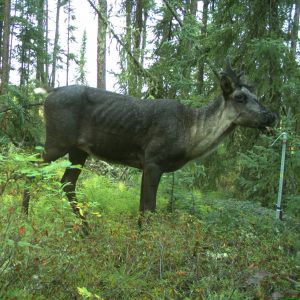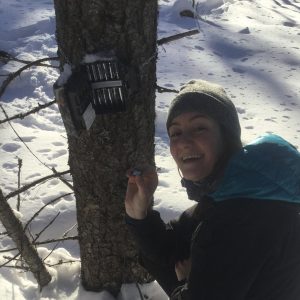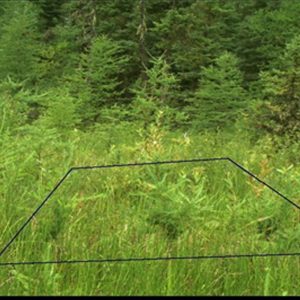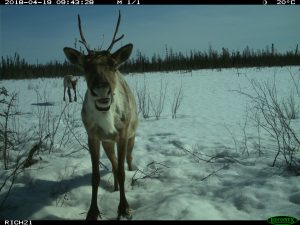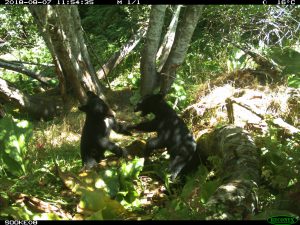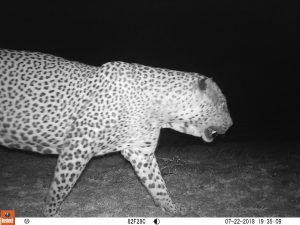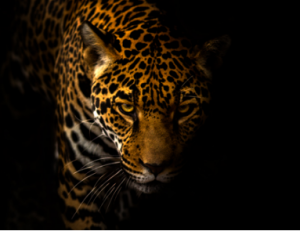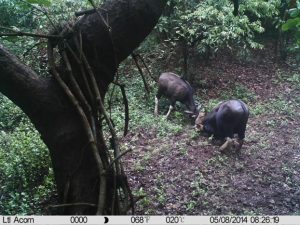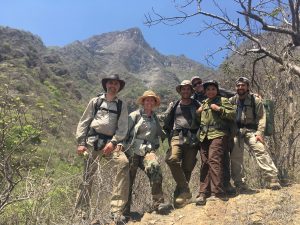Becoming a master’s student and studying the grizzly bear in the age of COVID-19 and social justice movements: a brief reflection
Introduction: my path to graduate studies By: Chris Colton (MSc Student) Two years ago, in the summer of 2018, I was preparing for the final semester of my undergraduate degree at UBC. I was lucky enough to have a great mentor and friend at the time named Zoltan Mityok who was an MSc student in […]
Caribou, Communities, and Keeping the Peace
By Erin Tattersall A human-wildlife conflict is simmering in the Peace River Region in northeastern British Columbia. On March 21, the BC government released a draft Partnership Agreement for the recovery of the Central Group of southern mountain caribou (Rangifer tarandus caribou). The draft outlines immediate actions to protect the six caribou herds in the […]
Of Mice and Moose: Five lessons and learnings from the start of grad school
By Alexia Constantinou 1. The past six months have been an exciting roller coaster of the birth of a new wildlife research project: my master’s thesis. I began my MSc in September of 2018, as a co-supervised student between Cole Burton (Wildlife Coexistence Lab) and Suzanne Simard (Belowground Ecology Group). My work focuses on how […]
Remote cameras for studying animals or plants: why not both?
By: Taylor Justason With one of WildCo’s main study tools being the camera trap, readers of this blog have probably gathered that the use of remote cameras to study the natural world is rapidly increasing in popularity. Remotely-triggered cameras for detecting wildlife have been in use almost as long as the camera has been around: […]
Richardson Caribou Range – A Tale of Two Disturbances
By Joanna Burgar Descending into our study area in the Richardson backcountry, almost exactly halfway between Fort McMurray and Fort Chipewyan in north-eastern Alberta, stirs up a mix of emotions. Our study area lies within Canada’s magnificent boreal forest —a fire dominated landscape comprising burned and unburned patches of upland jack pine (Pinus banksiana) and […]
Where are the bears?
By Joanna van Bommel I have now been out to my fieldwork site 6 times spanning from June-October, and while locals and my camera traps both agree there is a lot of black bear activity, I have yet to see one. I have camera traps set up in Sooke, a municipality west of Victoria on […]
The Conservation Learning Curve
By Aisha Uduman As a MSc student in the UBC Wildlife Coexistence Lab, I’ve always been drawn to interdisciplinary research aiming to address pressing issues of our time. How do we balance poverty alleviation and economic development, while allowing for coexistence with species competing with humans for habitat and potential prey? That’s probably how I […]
Carnivore persistence and connectivity in fragmented forests of southern Ecuador and northern Peru
***We are looking for camera-trap carnivore records from the dry and moist forests of Western Ecuador and Peru! Please see below and contact us for more information! *** Motivation Currently, more than a third of the global forest cover has been lost because of deforestation and land cover change 1, leaving only about 7.5% of […]
Do protected areas work?
By Cheng Chen Setting up protected areas is one of the fundamental approaches of in-situ conservation. But ecologists and conservation biologists are always wondering: do protected areas work for wildlife? In 2015, I spent 6 months in 6 protected areas located in a place called Xishuangbanna (pronunciation: “Sibsong banna”) in Southwest China and tried to […]
I finally made it to “Las Sogas (the ropes)”
By Francis Aurich The general focus of my research project is the study of the Andean bear, also known as the spectacled bear, in Northern Peru. I am currently using some of the Spectacled Bear Conservation Society (SBC) field data. Over the past 10 years, SBC has been monitoring the population of bears that inhabit […]

